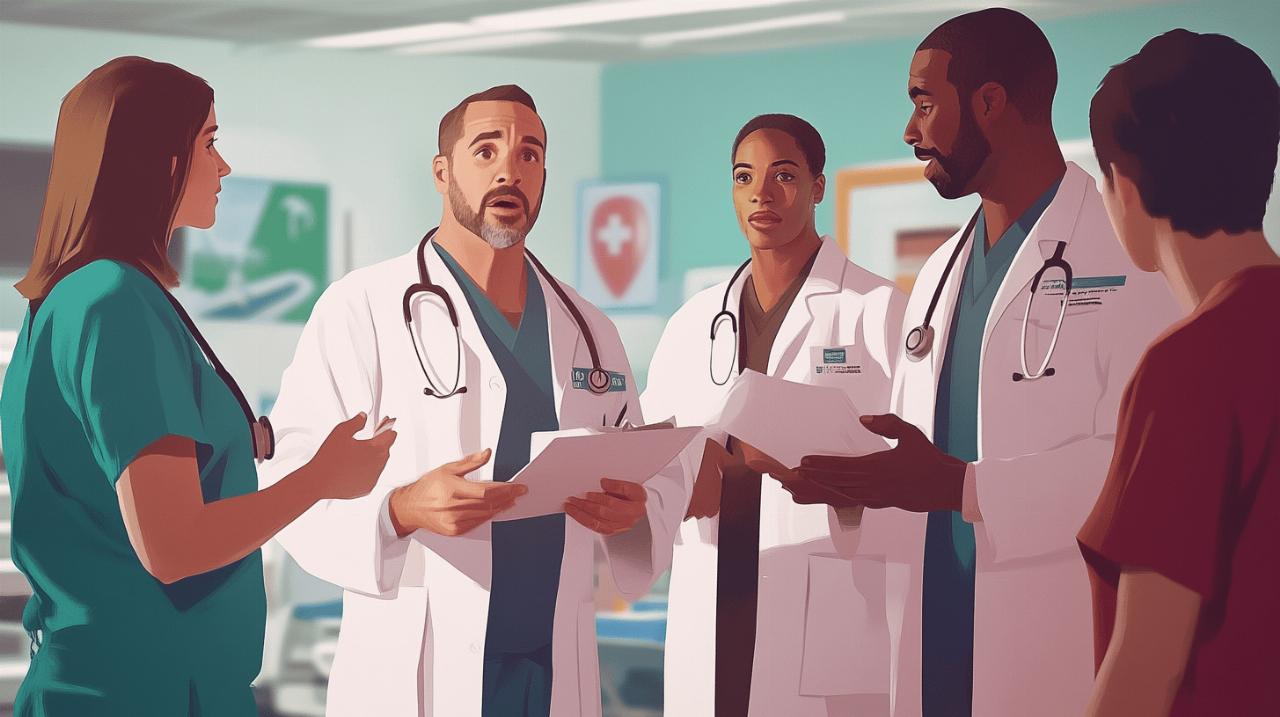In today’s complex healthcare environment, effective communication stands as the cornerstone of quality patient care and operational efficiency. Whether between healthcare providers and patients or among interdisciplinary teams, the way information flows can literally mean the difference between life and death. As healthcare systems evolve, so too must our approaches to communication within these vital settings.
Foundations of healthcare communication
Communication in healthcare extends far beyond simple exchanges of information. It forms the bedrock upon which trust, safety, and positive health outcomes are built. Healthcare professionals who master communication skills can significantly reduce medical errors, improve patient compliance, and enhance overall health outcomes. Many healthcare organisations are recognising this fact and implementing resources like those found on https://www.comunicasalud.es/ to promote effective communication practices.
Why clear communication saves lives
The critical nature of healthcare communication becomes evident when examining patient safety incidents. Clear, timely, and accurate information exchange prevents misdiagnoses, medication errors, and inappropriate treatments. When healthcare providers communicate effectively, they create a safety net that catches potential problems before they escalate into serious events. This includes everything from proper documentation in medical records to verbal handovers between shifts and departments.
Building trust through verbal and non-verbal cues
Trust forms the foundation of the healthcare relationship. Patients who trust their providers are more likely to disclose crucial health information, adhere to treatment plans, and return for follow-up care. Healthcare professionals can cultivate trust through both verbal communication techniques and nonverbal cues. Maintaining eye contact, nodding to show understanding, sitting rather than standing during consultations, and employing a warm, empathetic tone all contribute to building rapport. These elements of communication demonstrate respect for the patient as an individual rather than merely a clinical case.
Developing strong interdisciplinary team communication
Modern healthcare delivery requires coordination among diverse professionals including doctors, nurses, pharmacists, therapists, and administrative staff. Each brings unique expertise and perspective, making effective team communication essential for comprehensive care delivery.
Structured information exchange protocols
Standardised communication tools provide frameworks that ensure critical information is consistently shared across team members. Tools such as SBAR (Situation, Background, Assessment, Recommendation) create common language platforms that bridge professional differences and reduce the risk of missing vital details. These protocols are particularly valuable during handovers, emergencies, and when communicating across departments where misunderstandings could have serious consequences.
Breaking down professional silos
Traditional healthcare hierarchies can sometimes impede open communication. Creating environments where all team members feel empowered to speak up about patient concerns, regardless of their position, enhances patient safety and care quality. Regular interdisciplinary meetings, joint training sessions, and shared decision-making processes help dismantle these barriers, fostering a culture where collaboration takes precedence over professional territory.
The Art of Active Listening in Clinical Settings
Active listening represents perhaps the most undervalued yet powerful communication skill in healthcare. It involves fully focusing on the speaker, understanding their message, and responding thoughtfully. For healthcare professionals, mastering this skill dramatically improves diagnostic accuracy and patient satisfaction.
Techniques for full patient engagement
Effective active listening techniques include asking open-ended questions that allow patients to fully express their concerns, using the BATHE technique (Background, Affect, Trouble, Handling, Empathy) to explore emotional contexts, and providing verbal and non-verbal feedback that demonstrates attentiveness. When providers create space for patients to share their stories without interruption, they often uncover crucial clinical information that might otherwise remain hidden.

Reducing misinterpretation and medical errors
Misunderstandings in healthcare settings can have profound consequences. Active listening reduces these risks by ensuring that providers truly comprehend patient concerns rather than making assumptions. This practice includes techniques such as summarising information back to patients to verify understanding, clarifying ambiguous statements, and recognising when language barriers or health literacy challenges might be affecting communication.
Communication training programmes for healthcare staff
Recognising that communication skills are not innate but can be developed, many healthcare organisations now invest in formal training programmes for staff at all levels. These initiatives aim to standardise communication practices and provide healthcare professionals with practical tools they can implement immediately.
Simulation-based learning approaches
Simulation offers healthcare professionals safe opportunities to practice and refine communication skills in realistic scenarios. These controlled environments allow for immediate feedback and reflection without risking patient harm. Scenarios might include delivering difficult news, managing conflict with colleagues, or communicating with patients who have limited health literacy. The experiential nature of simulation helps participants internalise communication techniques more effectively than traditional lecture-based approaches.
Measuring improvement in communication competencies
Effective communication training programmes incorporate robust assessment mechanisms to measure progress and identify areas for further development. These might include patient satisfaction surveys, peer observations, recorded interactions with standardised patients, or self-assessment tools. By establishing baseline communication competencies and tracking improvements over time, healthcare organisations can demonstrate return on investment and continually refine their training approaches.
Diversifying communication channels in healthcare environments
The modern healthcare landscape offers numerous communication channels beyond traditional face-to-face interactions. Strategic selection and implementation of these diverse channels can enhance information flow while accommodating different preferences and needs.
Digital solutions for real-time information sharing
Digital platforms have revolutionised healthcare communication, enabling real-time information sharing across distances and time zones. Electronic health records, secure messaging systems, telehealth platforms, and mobile applications facilitate timely exchanges of clinical information, appointment reminders, and health education materials. For patients on waiting lists, digital validation through text messages or online forms provides efficient ways to update status and maintain engagement with the healthcare system.
When face-to-face communication remains essential
Despite technological advances, certain healthcare communications remain most effective when delivered in person. Discussions about serious diagnoses, complex treatment options, or end-of-life care often require the nuanced emotional intelligence and immediate responsiveness that face-to-face interactions afford. Healthcare organisations must develop guidelines for determining which communications warrant in-person delivery versus those that can be effectively managed through alternative channels.
Establishing robust feedback mechanisms
Communication in healthcare should never be one-directional. Creating pathways for feedback ensures that information flows continuously and improves over time, allowing systems to adapt and evolve based on real experiences.
Patient-centred feedback systems
Patient feedback provides invaluable insights into the effectiveness of healthcare communication. Structured systems for collecting, analysing, and responding to patient feedback might include satisfaction surveys, focus groups, complaint processes, or patient advisory councils. These mechanisms help identify communication breakdowns and highlight successful practices from the patient perspective, driving continuous improvement in how information is delivered and received.
Staff-to-management communication loops
Frontline healthcare staff often possess crucial insights about communication challenges and potential solutions. Creating channels for staff to share observations and suggestions with management ensures that operational decisions reflect the realities of daily clinical practice. Regular team meetings, anonymous suggestion systems, and direct access to leadership all contribute to creating an environment where communication continuously evolves and improves.
Navigating cultural and linguistic diversity
Healthcare systems serve increasingly diverse populations, making cultural and linguistic competence essential components of effective communication strategies. Organisations must develop systematic approaches to bridging these differences.
Translation services and cultural mediators
Professional interpreters and cultural mediators play vital roles in ensuring accurate communication across language barriers. These specialists do more than translate words; they help navigate cultural nuances that might otherwise lead to misunderstandings. Healthcare organisations should establish clear protocols for accessing interpretation services, including in-person interpreters, telephone language lines, and video remote interpreting options.
Developing cultural competence in healthcare teams
Beyond addressing language differences, healthcare providers must develop broader cultural competence to communicate effectively with diverse patient populations. This includes understanding how cultural beliefs influence health perspectives, recognising different communication styles, and adapting approaches accordingly. Training programmes that develop these competencies help providers avoid stereotyping while acknowledging genuine cultural differences that impact care delivery.
Empathy as a Cornerstone of Patient Care
At its core, healthcare communication must be grounded in genuine empathy for patients navigating what are often frightening and confusing experiences. Technical excellence in communication skills must be balanced with authentic human connection.
Teaching compassionate communication practices
Compassionate communication can be systematically taught and reinforced through dedicated training initiatives. These programmes help healthcare professionals develop skills for recognising emotional cues, responding appropriately to distress, and demonstrating genuine concern. Techniques such as reflective statements, validating emotions, and demonstrating presence can be practiced and incorporated into daily clinical interactions.
Balancing emotional connection with professional boundaries
While empathy forms an essential element of healthcare communication, providers must also maintain appropriate professional boundaries to protect both patients and themselves. Finding this balance requires self-awareness, regular reflection, and sometimes formal supervision. Healthcare organisations can support this balance by creating cultures that value emotional intelligence while providing clear guidelines about professional relationships and self-care practices.



